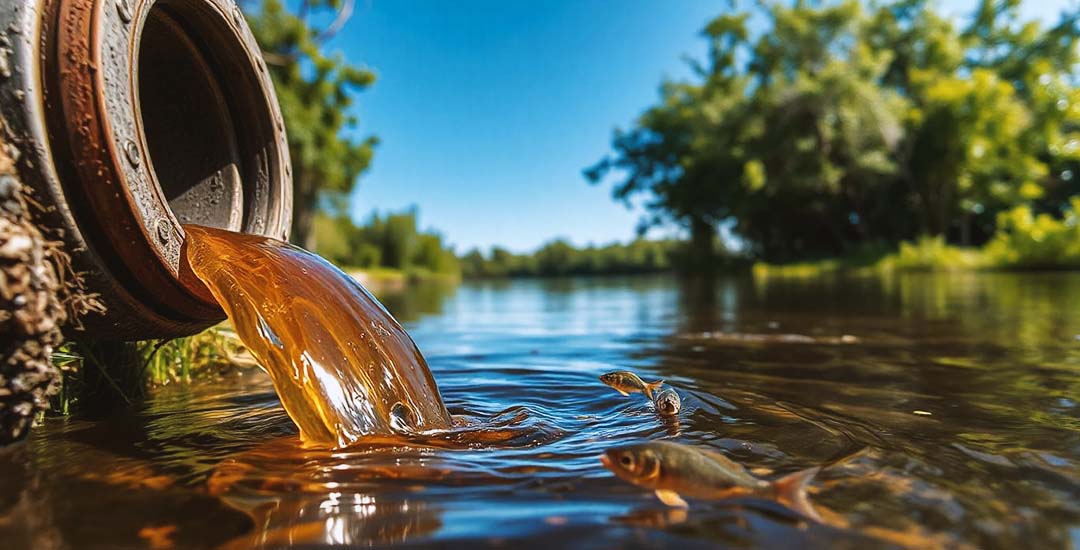
Danger! BOD and COD in the Palm Flour Liquid Waste Producing Industry
EnvidataID, Semarang – The development of industry in Indonesia is currently very rapid. This is proven by the increase in the country’s population so that the need for goods and services commodities has also increased. Based on the results of an annual survey conducted by the Central Statistics Agency of the Republic of Indonesia, there are 25,249 large and medium-scale industries, and 33,858 small and micro industries. Industry has a major impact on the environment because it transforms nature into new products and produces production waste that pollutes the environment. Industries produce waste, both liquid, solid, and gas waste that will enter the environment around the industry. This waste can have a negative impact on the environment and public health of course. One example of an industry that contributes waste is the palm flour industry.
Palm flour is the raw material for making vermicelli, cendol, noodles, meatballs, hunkwe, and others. Palm flour liquid waste is waste produced from the process of squeezing palm fiber to obtain starch flour sediment. This waste can pollute the environment if not processed properly. Based on data from the Klaten Regency Environment and Forestry Service in 2015, around 10 m3 of water was used to process 10 tons of raw materials for making palm flour. If the amount of raw material is estimated to reach 100 tons processed in 3 days, then the wastewater generation is estimated to be around 100 m3 in 3 days or 33 m3 per day. According to Central Java Provincial Regulation No. 5 of 2012 concerning Wastewater Quality Standards, the BOD content requirement limit for class II wastewater quality standards is 100 mg/L while for COD it is 250 mg/L. The following is the definition of BOD and COD.
Understanding BOD and COD
BOD stands for Biological Oxygen Demand, which is a chemical parameter to measure water quality. BOD is defined as the amount of oxygen needed by microorganisms to oxidize organic matter into inorganic matter. BOD is the most widely used indicator of organic pollution for water quality control. Regulation of the Minister of Environment and Forestry Number P.68/Menlhk/Setjen/Kum.1/8/2016 states that the BOD value should not exceed 30 mg/L. Several things that can interfere with BOD testing include: pH conditions, The presence of chlorine and its derivatives, Ozone, Heavy metals. To ensure that BOD testing runs smoothly, several requirements must be met:
- The pH value of the sample ranges from 6.5 – 7.5
- Have sufficient nutrition and bacteria
- Does not contain toxic substances that can kill bacteria
- Good system (no leaks)
Meanwhile, Chemical Oxygen Demand or COD is an indicator that shows the amount of dissolved oxygen needed to decompose organic matter in water through a chemical process. COD is also known as chemical oxygen demand (CHO). COD is one of the water quality parameters used to measure the short-term impact of liquid waste on oxygen levels in water. COD can be used to measure the amount of pollutants that can be oxidized in surface water, such as lakes and rivers, or wastewater. COD is expressed in milligrams per liter (mg/L). High COD values can result in poor oxygen content in water bodies, thus disrupting aquatic ecosystems. COD measurements are carried out using special reflux equipment, concentrated acid, heating, and titration.
The impact of BOD and COD on the environment
If liquid waste is discharged directly into the environment before processing, it will cause water pollution and produce a foul odor. The results of Souisa’s (2018) study, wells that do not meet the minimum health requirements for dug wells include the distance of the pollutant to the dug well and the physical requirements or construction of the dug well such as the well floor, well lip, well walls or rings, dug well waste channels, and well covers. Disposal of wastewater that is not treated first can result in shallow water pollution or water pollution in the wells of local residents. Most Indonesian people who live in the district area still rely on well water as a source of clean water. However, in certain cases, in the area around the palm starch flour factory, it is predicted that many wells have been polluted. Polluted wells have characteristics, namely yellowish well water and a fishy smell.
The problem of pollution due to waste that is not managed properly is not only caused by large industries, but also by small industries that often do not have waste processing facilities or IPAL (Wastewater Treatment Plants). Given the large number of small industries and their scattered locations, this needs attention. A simple concept in wastewater treatment, one of which is by combining several methods, namely aeration, filtration, and adsorption methods.
Thank you for reading, if you want to know more details, we have information in the form of published research related to the content of this article. Here is the download link.
Source: envidata.id

